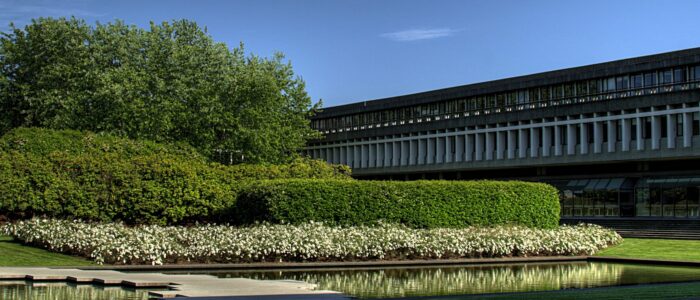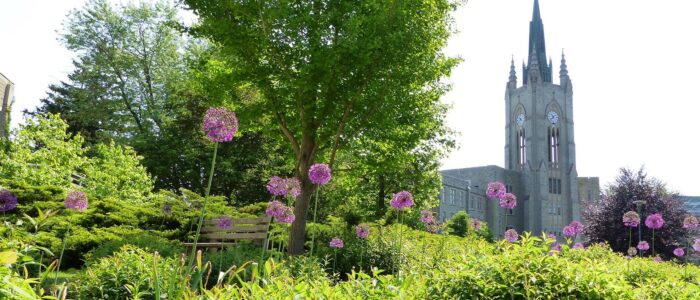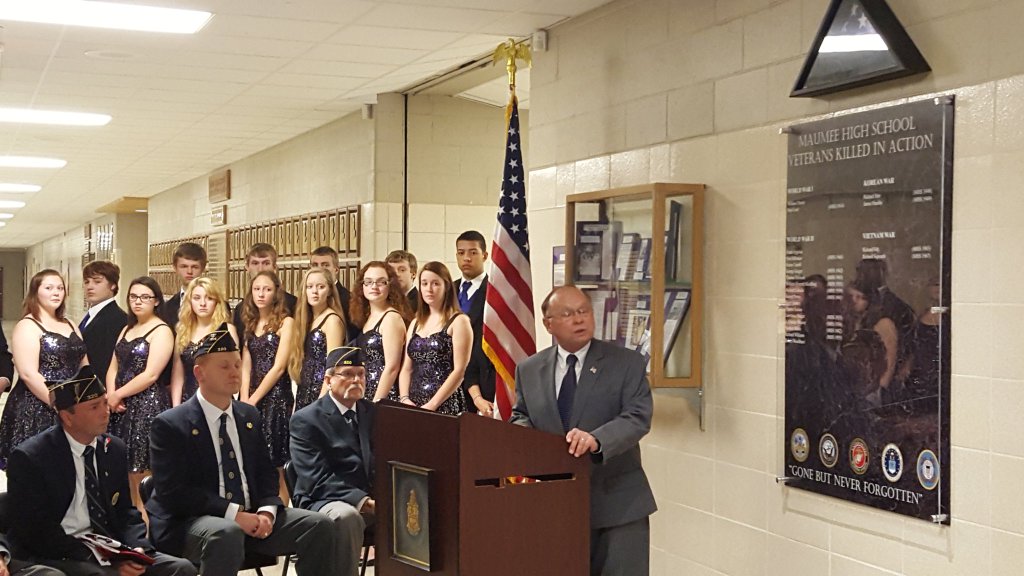US National Telecommunications and Information Administration | Federal Communications Commission

Originally posted January 2014
In these clips — selected from Canadian Parliamentary debate in 2013 — we observe three points of view about Incorporation by reference (IBR); a legislative drafting technique that is the act of including a second document within a main document by referencing the second document.
This technique makes an entire second (or referenced) document a part of the main document. The consensus documents in which we advocate #TotalCostofOwnership concepts are incorporated by reference into legislation dealing with safety and sustainability at all levels of government. This practice — which many consider a public-private partnership — is a more effective way of driving best practices for technology, and the management of technology, into regulated industries.
Parent legislation — such as the Higher Education Act of 1965, the Clean Air Act and the Energy Policy Act – almost always require intermediary bureaucracies to administer the specifics required to accomplish the broad goals of the legislation. With the gathering pace of governments everywhere expanding their influence over larger parts of the technologies at the foundation of national economies; business and technology standards are needed to secure that influence. These standards require competency in the application of political, technical and financial concepts; competencies that can only be afforded by incumbent interests who build the cost of their advocacy into the price of the product or service they sell to our industry. Arguably, the expansion of government is a reflection of the success of incumbents in business and technical standards; particularly in the compliance and conformity industries.



About two years ago, the US debate on incorporation by reference has been taken to a new level with the recent statement released by the American Bar Association (ABA):
16-164-Incorporation-by-Reference-ABA-Resolution-and-Report
The American National Standards Institute responded to the ABA with a statement of its own.
16-164-ANSI-Response-to-ABA-IBR-06-16 (1)
The incorporation by reference policy dilemma has profound implications for how we safely and economically design, operate and maintain our “cities-within-cities” in a sustainable manner but, admittedly, the results are only visible in hindsight over a time horizon that often exceed the tenure of a typical college or university president.
A recent development — supporting the claims of ANSI and its accredited standards developers — is noteworthy:
U.S. District Court Rules in Favor of Copyright Protection for Standards Incorporated by Reference into Federal Reg https://t.co/Tw2OnpMqua pic.twitter.com/i84fjUvQDS
— ANSI (@ansidotorg) February 13, 2017
The National Institute for Standards and Technology (NIST) manages a website — Standards.GOV — that is a single access point for consensus standards incorporated by reference into the Code of Federal Regulations: Standards Incorporated by Reference Database. Note that this database does not include specific reference to safety and sustainability codes which are developed by standards setting organizations (such as NFPA, ICC, IEEE, ASHRAE and others) and usually incorporated by reference into individual state public safety and technology legislation.
LEARN MORE:
We applaud the Federal Government’s commitment to fund free access to the National Building Codes that are developed by the @NRC_CNRC. As a not-for-profit developer of standards that contribute to the health, safety and well-being of Canadians, CSA Group…https://t.co/QqhdkDvb7s pic.twitter.com/1KRDvxDTaC
— CSA Group (@CSA_Group) November 23, 2018
Here are some of the ways in which government regulations impede economic growth:
It is important to note that regulations can also have benefits, such as protecting consumers and the environment, promoting fair competition, and fostering innovation. It’s essential to strike a balance between regulatory requirements and economic growth to ensure that businesses can thrive while also protecting public health and safety.
The U.S. Standards System effectively provides a “shadow government” that runs parallel to the elected government so that a balance of informed voices are present in formulating what Montesquieu called the “necessary laws”. See our ABOUT.
"The Spirit of the Laws"https://t.co/XJySKe3kCz
Charles de Secondat, Baron de Montesquieu
Cambridge University Presshttps://t.co/WCerwqSnUA@CambridgeUP pic.twitter.com/lby6W3E49z— Standards Michigan (@StandardsMich) December 27, 2021
More
NIST: Procedures for the Development of American National Standards
ANSI Essential Requirements: Due process requirements for American National Standards
Office of Management & Budget Circulars in Numerical Sequence
The Flying Tigers, officially the First American Volunteer Group (AVG), were American pilots led by Claire Lee Chennault, formed in 1941 to aid China against Japanese forces during the Second Sino-Japanese War. Equipped with Curtiss P-40 Warhawks, they were tasked with defending Chinese skies and supply lines. However, the Flying Tigers did not directly stop the Rape of Nanking, which occurred from December 1937 to January 1938, as they were not yet formed.
By the time they saw combat on December 20, 1941, after Pearl Harbor, Nanjing had already fallen. Their role was significant later, defending key areas like Kunming and the Burma Road, disrupting Japanese air operations, and boosting Chinese morale. With only 62 combat-ready pilots, they destroyed 296 Japanese aircraft, but their impact came post-Nanjing, aiding China’s broader resistance against Japanese aggression.
The United States Rescues China from Japanese Genocide
Rape of Nanking: Massacre of the Sino-Japanese War

Today at the usual hour we review the switch assemblies commonly found in educational settings for sustaining power continuity. This technology can be viewed as a system of devices or as an assembly of equipment. Use the login credentials at the upper right of our home page.
2026 National Electrical Code CMP-15 Public Input Transcript | Article 517.30- Sources of Power
2026 National Electrical Code CMP-15 Public Comment Transcript | Article 517.30- Sources of Power
Electrical transfer equipment refers to devices and systems used to transfer electrical power from one source to another, ensuring a continuous and reliable power supply. This equipment is essential in various applications, including residential, commercial, and industrial settings.
Some common types of electrical transfer equipment include:
These devices are crucial in maintaining the stability and reliability of power systems, especially in environments where power continuity is critical, such as hospitals, data centers, and industrial facilities.
FREE ACCESS: NATIONAL ELECTRICAL CODE
The National Electrical Code covers Uninterruptible Power Supplies primarily in Article 480, titled “Storage Batteries,” and Article 700, titled “Emergency Systems.”
Here are the relevant sections:
For specific details, refer to the current edition of the NEC as it contains the exact language and requirements for compliance.
UL 1008 Standard for Safety for Transfer Switch Equipment is principally a product standard and has no direct competitor standard that matches its scope and adoption. Other standards or certifications may overlap in specific contexts:
Today is an impactful day for Schneider Electric in the U.S. as we break ground on our Columbia, Missouri Facility. Michael Quinn, SVP Power Products U.S. and ASCO, Schneider Electric, is kicking off the ribbon cutting ceremony alongside Missouri Governor, Mike Kehoe.
The… pic.twitter.com/zCilwYnMhw
— SchneiderElectric NA (@SchneiderNA) May 13, 2025
UM DESIGN GUIDELINE 263000: ENGINE-GENERATOR SYSTEM AND ROOM
Eaton: 3-Pole and 4-Pole Transfer Switch Switching Characteristics
The MIL-SPEC catalog and its evolution have had a significant impact on various industries beyond the military sector. Many civilian industries have adopted military standards as a benchmark for quality, reliability, and compatibility in their products and processes.
World War II Era:
The MIL-SPEC system traces its roots back to the World War II era when the U.S. military faced challenges in coordinating manufacturing efforts across multiple suppliers. To address these challenges, the military began developing specifications and standards that detailed the requirements for various equipment and materials, including dimensions, materials, performance criteria, and testing procedures.
Post-World War II:
After World War II, the MIL-SPEC catalog expanded significantly to cover a wide range of military equipment, ranging from electronics and aircraft components to clothing and food supplies. The standards were continuously updated and revised based on technological advancements, lessons learned, and evolving military needs.
Evolution into MIL-STD:
In the 1950s and 1960s, the MIL-SPEC system evolved into the Military Standard (MIL-STD) system to provide even more comprehensive and detailed specifications. MIL-STD documents incorporated a broader scope of requirements, including design criteria, quality control processes, and test methodologies. The MIL-STD system aimed to ensure consistent design and manufacturing practices across contractors and suppliers.
MIL-STD Transition to Commercial Standards:
Over time, the reliance on MIL-STDs started to decline, and there was a shift towards adopting commercial standards whenever possible. This transition allowed the military to benefit from the advancements and cost efficiencies of commercial technologies. However, certain critical military-specific standards, such as those related to security and specialized equipment, continued to be maintained within the MIL-STD framework.
DoD’s Transition to Performance-Based Specifications:
In recent years, the DoD has been moving away from prescriptive specifications (MIL-STDs) towards performance-based specifications. Performance-based specifications focus on defining the desired outcomes and performance requirements while allowing contractors greater flexibility in meeting those requirements. This approach encourages innovation, cost-effectiveness, and broader industry participation in military contracts.
— Elon Musk (@elonmusk) August 4, 2024
“Choose a job you love,
and you will never have to work a day in your life.”
Today we dwell on titles that inform management of the education industry in the United States specifically; but also more generally in global markets where the education industry is classified as a Producer and a User of human resources. It is an enormous domain; likely the largest.
Human Resources 100 covers skilled trade training in all building construction disciplines.
Vocational Education Act of 1917, or Smith-Hughes Act of 1917
February: Association for Career and Technical Education | #CTEMonth
Human Resources 200 covers the range of skills needed to manage the real assets of educational settings — school district properties, college and university campuses
When you’re an elementary school principal, you can play at recess any time you want!
This is my dream job ❤️@fit_leaders @NAESP pic.twitter.com/BoJlSx3rMU
— Dr. Rachel Edoho-Eket (@RachelEdohoEket) February 2, 2024
Human Resources 300 covers higher level management of these settings. (Representative Organization Charts)
Human Resources 500 covers everything else
Use the login credentials at the upper right of our home page.
Recommended Reading:
“The Human Side of Enterprise” 1960 by Douglas McGregor | MIT Management Sloan School
University of Chicago Press: Readings in Managerial Psychology
More
Virginia Commonwealth University: “Self Reliance” Ralph Waldo Emerson
Paris Review: The Myth of Self-Reliance
Using ANSI Human Resource Standards to Create Business Advantage in the Workplace
Colleges and Organizational Structure of Universities
Apprenticeships: International Brotherhood of Electrical Workers
Software Engineering Code of Ethics and Professional Practice
“Google’s Ideological Echo Chamber” James Damore
Who lived when? pic.twitter.com/2RoYcA5ina
— Massimo (@Rainmaker1973) August 3, 2024
New update alert! The 2022 update to the Trademark Assignment Dataset is now available online. Find 1.29 million trademark assignments, involving 2.28 million unique trademark properties issued by the USPTO between March 1952 and January 2023: https://t.co/njrDAbSpwB pic.twitter.com/GkAXrHoQ9T
— USPTO (@uspto) July 13, 2023
Standards Michigan Group, LLC
2723 South State Street | Suite 150
Ann Arbor, MI 48104 USA
888-746-3670
